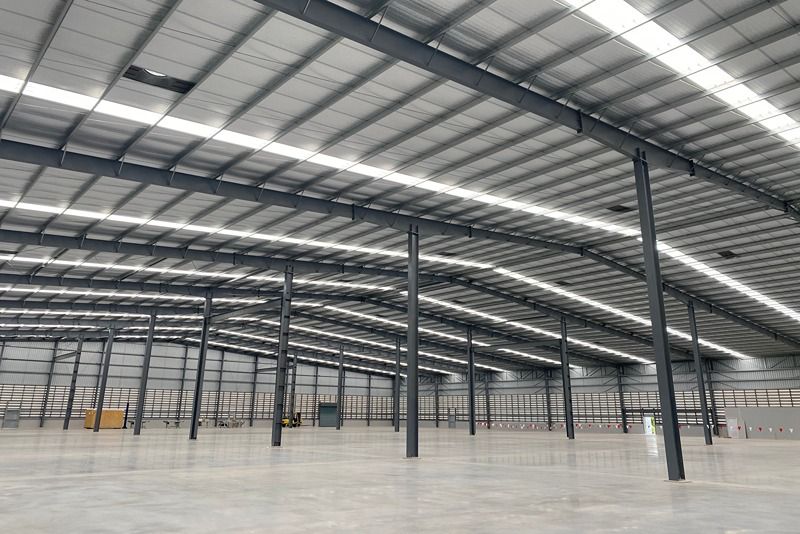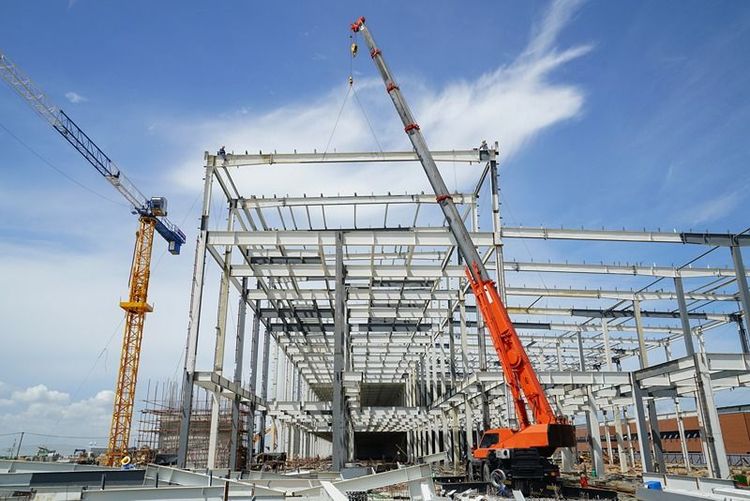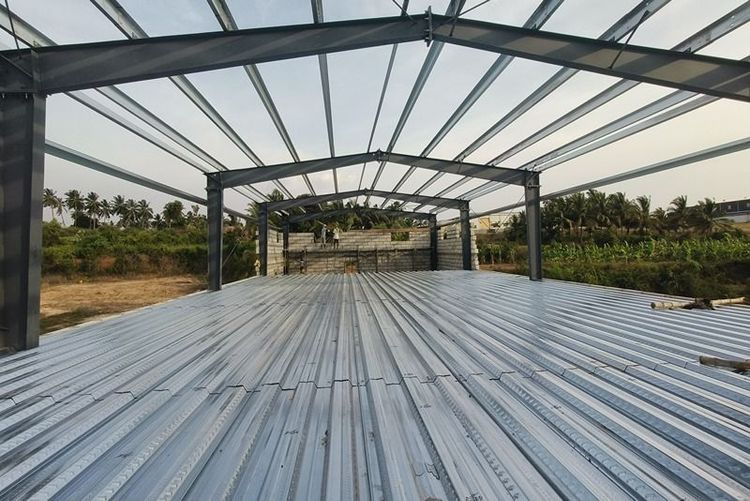Pre-engineered buildings (PEBs) are essential in modern construction, particularly in large-scale industrial and commercial applications. Hot-rolled steel serves as a core structural material due to its superior properties. Below, we detail the technical benefits of using hot-rolled steel, focusing on its mechanical properties, common grades, and structural applications in PEB projects.
1. High structural strength and durability
The hot-rolling process involves heating steel above its recrystallisation temperature (around 1,100 degrees Celsius) and rolling it into the desired shape. This process refines the grain structure, increasing toughness and uniformity in mechanical properties. Hot-rolled steel grades such as IS 2062 E250, and E350 are extensively used in PEBs.
IS 2062 E250: Offers a minimum yield strength of 250 MPa, which is suitable for general structural applications.
IS 2062 E350: Provides a higher yield strength of 350 MPa, making it ideal for load-bearing structures where enhanced strength is necessary.
These grades ensure the steel frames can withstand significant axial and lateral loads, maintaining structural integrity under diverse operational conditions.
The advantages of using hot-rolled steel in large-scale PEB projects


2. Cost-effectiveness
The manufacturing of hot-rolled steel is less precise than cold-rolled steel, resulting in lower production costs. The simple production process, which involves rolling at high temperatures, reduces the need for secondary processing. IS 2062 E250 provides an optimal balance between price and structural capacity, meeting the budget constraints of large-scale PEB projects without compromising safety or performance. Its cost-effective nature is advantageous for high-volume applications such as industrial warehouses, production facilities, and distribution centres.
3. Quick and efficient construction
The malleability of hot-rolled steel facilitates its transformation into various cross-sectional shapes, such as I-beams, H-beams, and wide flange sections, which are critical in PEB construction. The commonly used IS 808 sections, manufactured from IS 2062 E350, support rapid assembly due to their consistency and standardised dimensions.
Hot-rolled beams and columns can be pre-fabricated, shipped, and installed on-site with minimal adjustments, speeding up the overall construction timeline. The properties of IS 2062 E350 allow for easy welding and bolting, which is crucial for connections and joints that form the backbone of PEB structures.
4. Versatility in design and load distribution
Hot-rolled steel’s adaptability allows it to be used in various load-bearing applications. With its isotropic properties, hot-rolled steel ensures even load distribution, preventing structural imbalances. IS 2062 E410 is particularly useful for structures requiring higher tensile strength, such as large-span roofs and high-bay warehouses, without compromising flexibility.
Steel sections like HSS (Hollow Structural Sections) and wide flange beams derived from E350 grade are used for long-span beams that support significant loads. This reduces the need for interior columns and maximises usable space, allowing for design innovation while meeting the stringent requirements of large industrial and commercial structures.

5. High tolerance to environmental stress and fatigue
The metallurgical properties of hot-rolled steel, particularly E350 and E410 grades, make it suitable for environments subject to temperature fluctuations and dynamic loading. The thermal expansion properties of these grades help maintain dimensional stability under high temperatures, which is critical for projects exposed to harsh climatic conditions such as those in arid or coastal regions of India.
Hot-rolled steel exhibits high fatigue resistance, which is beneficial in PEBs where cyclical loading is common, such as in manufacturing plants or logistics hubs. IS 2062 E410 is known for its high tensile strength and ability to perform under stress, making it a reliable choice for demanding applications.
6. Consistent quality and availability
Steel grades like IS 2062 are standardised and produced in large volumes by Indian steel manufacturers, ensuring consistent mechanical properties and chemical composition. This standardisation facilitates quality control and compliance with building codes and standards, such as the Indian Standard Code IS 800, which governs the general construction of steel structures.
The ready availability of these grades allows for the seamless scaling of large PEB projects without the risk of supply chain disruptions. IS 2062 E250 and E350 grades are widely produced, supporting the needs of various structural components from primary load-bearing members to secondary bracing systems.
Buy online
Mild SteelStainless SteelStructural SteelTMTCementJSW One MSME
About usBlogsSitemapJSW One TMTPolicy
Terms & conditionsPrivacy policyReturn policyBanking partner


 +91 7208055523
+91 7208055523
 Help & support
Help & support
